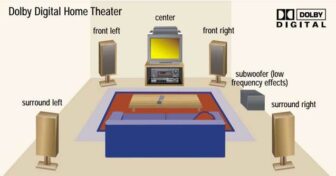Firefox OS the story so far
We catch up with the Mozilla-grown OS to see how far its plans for world domination have come.
A ndroid accounted for 81% of worldwide smartphone shipments in the third quarter of 2013 and iOS mopped up most of the rest, according to a study by IDC. Mozilla’s new Firefox OS is doomed to fail – after all, how can it hope to compete with the sales figures of Apple and Google, especially when veterans like BlackBerry and big names like Microsoft’s Windows Phone are struggling to make much of a dent in global sales? But Firefox OS isn’t just another smartphone operating system. It’s fundamentally different in creation to any of the major players – and Mozilla’s tactics and aims are somewhat different too.
Appy freedom
The goal of Firefox OS is primarily to create a truly open ecosystem, one where all apps can run on other operating systems and on almost any hardware. In other words: do away with the walled gardens that we’ve all become so accustomed to on phones.
Other smartphone platforms require apps to be developed specifically for them, so if a developer wants to put an app on multiple device types then it has to be manually ported each time. It also means that if a user ever abandons one operating system for another they won’t be able to access their apps any more. They’ll have to find and buy them all again, and that’s if they’re even available on your phone.
Firefox OS handles apps more like the internet handles web pages. Rather than proprietary tools, they’re built using open web standards like HTML5 and JavaScript, so they can run on just about any computing device that has access to Firefox, meaning Android phones and PCs alike can make use.
In other words, they’re platform agnostic. Because both Firefox OS and its apps have low hardware requirements you can access them on very affordable devices, designed to make the mobile web more open with minimal barriers to entry so the maximum number of users can get involved.
It’s a lofty goal, but if Firefox OS wasn’t so ambitious and so different it would have little hope of attracting any attention at all in the congested smartphone market – although it’s worth noting that this project is as much about offering something new to the developing markets as it is trying to break the smartphone stranglehold in the more mature areas. Firefox OS is also about trust and community development. As a truly open source OS it’s very transparent, allowing tech-savvy users to see how their personal data is handled, while both individuals and organisations are free to build on and modify Firefox OS to improve it and make it available for other platforms.
Adaptation
Firefox OS has another trick up its sleeve and it’s called adaptive app search. It’s a search screen which is used both to find apps and documents that are already installed on your phone as well as web apps that you might be interested in, essentially combining a web search with a search of your phone storage.
Simply type a word out and it will bring back all the relevant results from both local and online content. Web apps can then be used immediately or downloaded to your phone and the results will even adapt to your location when relevant, ensuring you always get the best results possible.
This web-facing approach doesn’t mean any phone running Firefox OS has no similarities to your Android or iPhone. It still uses a lock screen, home screen and notifications bar, and handsets that run Firefox OS come with a camera complete with style filters, a music player and FM radio. On top of that there’s the obvious suite of software: maps, the Firefox web browser, Firefox Marketplace for apps, an email app plus built-in integration with Facebook and Twitter to make users coming from other smartphones feel right at home.
But even with all the positive aspects of Firefox OS it’s not really ready to take on Android and iOS. Both of those operating systems have been around for years and gone through numerous changes, while Firefox OS is only on version 1.2. It also has far fewer apps than either of the big two and so far it’s only available for a handful of phones, most of which are pretty low end.
So it’s not likely to tempt too many consumers on these shores in its current state, but then it’s also not readily available in many of the more developed smartphone nations yet and that’s a very conscious decision from Mozilla.
Smartphones are enormously popular in the UK, for instance, where 62.2% of the population has one according to a study by Statista. Disposable incomes are higher too, so expensive flagship phones are in great demand and the super-cheap aspirations of Firefox aren’t being touted beyond finding some hardware available on eBay.
As such it’s incredibly unlikely that Firefox OS could make much headway in this area, with users entrenched in iOS and Android and looking for high end handsets. It’s a similar story in the US and other wealthy nations, which is why Firefox OS is not available in them for the most part either. But there are some parts of the world where it’s a very different story.
New markets
In Peru, for example, smartphone penetration stands at just 17%, according to a study by Ipsos Peru, leaving the vast majority of its 30 million strong population without a handset and likely to be more open to an iOS and Android alternative.
This is true when you consider the availability of very affordable phones such as the ZTE Open, and Firefox OS could soon be available for phones, which puts it in direct competition with the feature phone price range.
In case you haven’t guessed, Peru is one of the countries where you can currently buy Firefox OS phones, showing Mozilla is instead trying to capture new and developing markets, where the fact that it’s so new won’t be such a problem and the fact that it’s affordable will be a huge advantage. With Firefox OS running on just 128MB of RAM it’s going to be an appealing option for both customers and manufacturers, who can squeeze the OS into increasingly cheap handsets.
In an interview, Mozilla’s head of engineering, Jonathan Nightingale, told us: “Our CEO talks about how we’re going to have two billion people joining the web for the first time and we’ve got about two billion on the web now, so the two billion coming in is going to look really different.
“A lot of people are asking whether Firefox OS is designed for the emerging market and whether that’s our segment.
Certainly, that’s an important place for us to be. We’re non- profit, we’re mission driven so we look at it and think, if those people are coming online, they’re not going to be doing it on a smartphone. We have a real opportunity to introduce something there.”
Spread the web
By focusing on developing markets Mozilla is also working towards its goal of bringing the web to more people, because it will get internet-enabled phones into the hands of those who may never have owned a smartphone or computer before. It’s a strategy mirrored by the likes of Nokia, which has had plans to build phones that connect the next billion users to the internet and explains why it’s adding a version of Android (with the Nokia X) to its range to service this market segment which has access to 3G but no fixed landlines.
Other brands, such as Sony, Huawei, LG and Alcatel are all getting behind the open OS, committing to launching hardware with a smattering of devices in the market, with more to come. At Mobile World Congress in Barcelona, Spain, Mozilla announced the commercial launch of seven new devices using Firefox OS – ZTE Open C, ZTE Open II, Huawei Y300, Alcatel One Touch Fire C, Alcatel One Touch Fire E, Alcatel One Touch Fire S smartphones and Alcatel One Touch Fire 7 tablet. It’s not a huge, sweeping effort to enter the market, but shows that there is at least some intrigue there.
So far things seem to be going according to plan for Mozilla’s new OS, as back in October 2013 it was reported by Telefonica that Firefox OS accounted for more than 12% of smartphone sales in Venezuela and almost 9% in Colombia.
Ultimately, once the OS matures there’s every chance that it will spread to the UK and beyond and until it has matured you probably won’t want it anyway. Even if or when it does go global, Mozilla doesn’t necessarily need it to compete with Android and iOS.
As a non-profit organisation it doesn’t need to be number one, all it needs is for enough people to be using Firefox OS that it’s a known entity and that developers are making a large number of applications for it, applications which can then be run on other devices, keeping the mobile web open and accessible, two of the key goals in Mozilla’s manifesto.
Onwards and upwards
Firefox OS’s use of HTML5 should make it easier for developers to get on board too as many will already know HTML5 and won’t have to learn a new programming language. In the words of Nightingale: “There’s 200,000 iOS developers, 600,000 Android developers and there’s 8 million web developers out there. If you’re not betting on HTML5, you’re making a mistake.” But Firefox OS isn’t even just about phones. In the future Mozilla wants to see Firefox OS and its principles of openness make their way to smartwatches, cars and any other products with an internet connection.
Because Firefox OS is an open source system that other companies and individuals are allowed to adapt and use for their own purposes, there’s no reason it couldn’t power stereos, fridges, vacuum cleaners and just about anything else in the future. In fact, it’s ideally positioned to capitalise on the ever growing number of smart devices and the news is Panasonic will be using Firefox OS in its TVs and other entertainment devices.
There’s no doubt that it has an uphill struggle, but by taking a different, more altruistic approach to things, Mozilla and its Firefox OS might just stand a chance, especially in developing nations. Don’t expect Firefox OS to make waves over here just yet, but you can certainly find ZTE Open models on eBay for a tenth of the price of the iPhone.
ZTE Open C hands on
The ZTE Open C can boast about a couple of things – its Firefox OS. But the boasting can’t really go much beyond that: this is a phone that screams its price tag from every cut-price pore of its chunky casing.
The WVGA (800×640) TFT screen is starting to look too low at the 4-inch size, even considering the price, and the multi- touch does feel spongy. For depth of colour display it’s actually not too shabby, and for those people who feel that their selfies could do with a little airbrushing the blurriness might actually prove to be a godsend. But that’s not to say it isn’t without merit – Firefox maker Mozilla’s laudable attitude to openness deserves praise, and that has seeped into the operating system, bringing a straightforwardness that will appeal to many Linux users.
In use the phone’s 512MB of RAM can creak under the strain of busy websites through the Firefox browser, and although some of the apps ran fairly competently it was clear that this is not a phone for people who are looking to multitask or perform anything beyond standard tasks.
The build quality is nothing to write home about, with two of the phones that we examined showing a suspiciously widened bottom seam, although both units were encumbered by a heavy security latch that probably cost more than the phone itself. At a shade over 1cm thick, this is not a stylish or beautiful phone – more stocky than sexy – although some of the colour options are quite nice. The 3MP camera is not blessed with an especially good lens, although our judgement was obviously coloured by viewing the results on the less than excellent screen.
You have to make allowances for phones that are aiming at a particular price point, and to compare this device with the Samsung Galaxy S4 or even its higher range ZTE Android brethren would be folly. But there’s no excusing some of the issues that we found on the Open C – a poor screen, woolly multi-touch and build issues. Watch this space.






